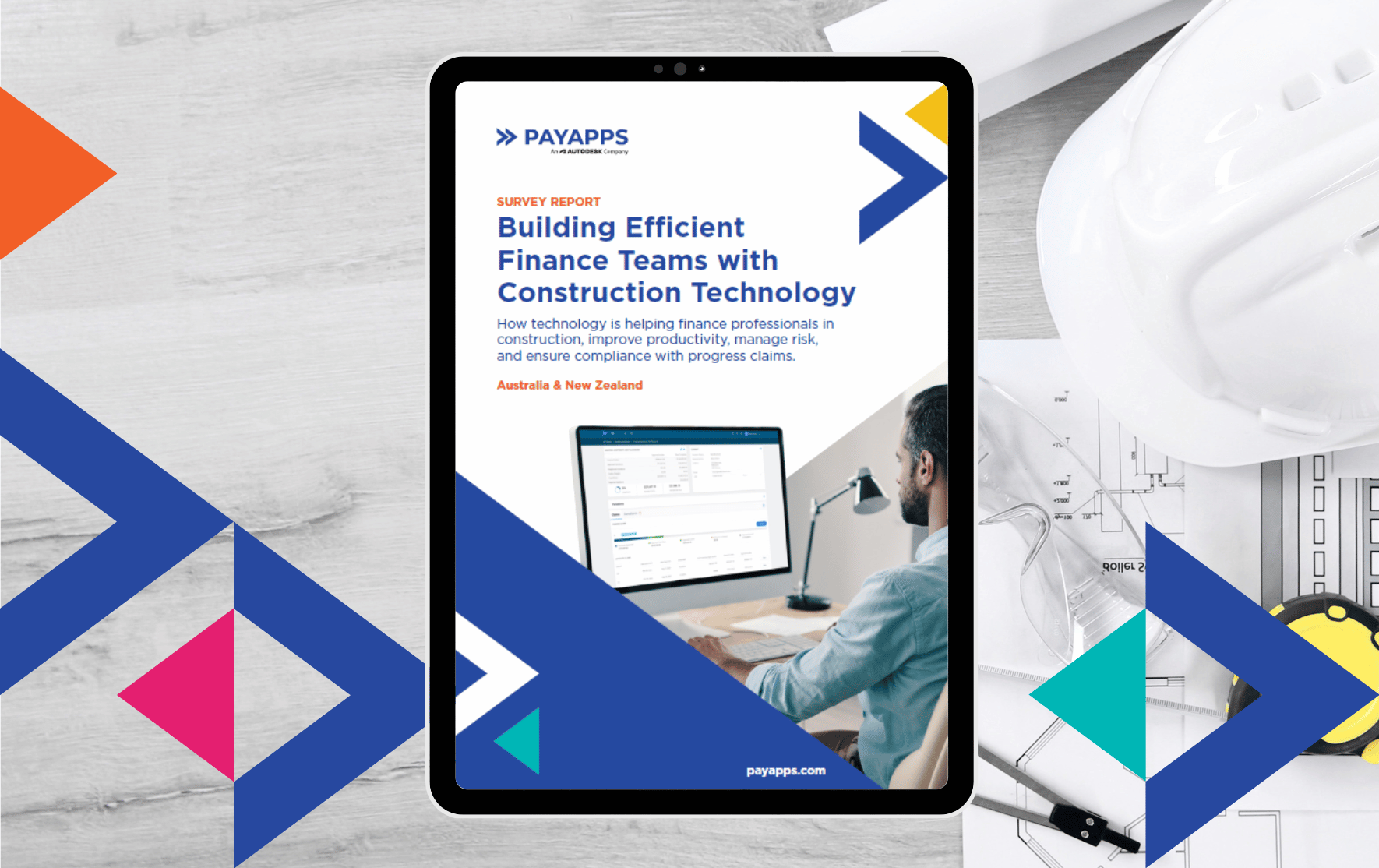Let’s get the bad news out of the way first. Then the good news – and there is good news – can be placed in the right context.
Delays in construction projects are a fact of life. In fact, they are an inevitable and unwelcome reality as one of the most common problems associated with the industry. A detailed review and analysis within a ResearchGate report highlights the variety of construction project delays endured by the various players in the construction industry, such as primary contractors, consultants, designers, and sub-contractors.
The analysis of construction delays reveals almost a third of contractors anticipate their projects are subject to delays and overruns. Several reasons for this scenario crop up repeatedly. The major consistent causes that frustrate the construction industry are as follows:
Original planning is flawed
Insufficient preparation, poor management strategy, or ill-advised project work breakdown structure. Miscalculations in budgeting are all too common issues.
Unrealistic scheduling
This is a prominent reason for construction delays. Short timelines often result in competing contractors setting deadlines impossible to achieve. Likewise, contractors are handed predetermined timelines that can be unrealistic.
Specifications keep changing
Adjustments made to the original design, or choices of materials are not unusual. But the impact on an already strict schedule can have severe financial implications with the result of stalling the project.
Imperfect project information
Often the client may be to blame for this factor. Failure by the client to provide, in time, all the relevant information about the construction site, such as the necessary drawings, design documents, or approvals, inevitably triggers delays.
Stormy weather
Legendary comic Spike Milligan famously said: “If you want better weather, just pay the weathermen more money!” Whatever one’s opinion about climate change, it seems certain we are entering an age of increased risk from extreme weather events.
The construction industry knows all about how the weather can cause construction project delays. Accepting that construction planning and design are governed by the landscape, geography and local weather, building strategies and materials should be tailored to suit the climate in which the project is taking place.
A “perfect storm”
In addition to the above sobering list, the Australian construction industry is further suffering from the impact of COVID-19. Shortage of material supplies, and inadequate labour resources are extra adverse factors delaying construction projects and construction timelines. This is coming at a time of record home building demand.
So significant is this impact, Australian industry leaders have blamed “a perfect storm” for rocketing prices and materials shortage. The pandemic’s effect on international supply chains and a global shortage of shipping containers has made importing materials extremely slow and expensive.
Construction material costs have also had their biggest quarterly rise since the 2008 global financial crisis, according to the Australian Bureau of Statistics. Escalating costs and shortage of material supplies, plus inadequate labour resources will often lead to slow progress or in the case of shortage of key supplies, a total pause.
But there is a brighter horizon
Now, as promised – the good news. There are ways of minimising all of the above construction project challenges through proper planning and sound project management, underpinned in part by the power of construction software solutions.
In the ResearchGate analysis, participants accept that the level of delays in construction projects is high. They stressed the importance of all parties being on the same page and receiving all relevant information and documents. Not just before the start, but throughout the life of the project.
In summary they offered key pathways to mitigate construction project delays:
1. Effectively improving information flow before the work actually starts, for example by site investigations and shared drawings.
2. Again, before work starts, improved preparation involves better scheduling and project management practice.
3. Better cohesive approach by exercising quality monitoring and regular updates with all parties involved.
4. Time is money. So, all parties should agree to stick to a set budget. This, in turn, is governed by an agreed schedule. Having agreed to this then all parties need to keep track of progress every step of the way.
The participants thought the best way forward was the adoption of construction software. This thinking exactly echoes the rationale that prompted the creation of Payapps construction software solution.
The inspiration for Payapps was the idea of working with cloud-based, integrated construction software for managing progress claims up and down the supply chain. The vision: to put all the key players in the construction process on the same page. How? Real time data as they relate to costs in construction is the critical factor. Equipment, materials, worker status visibility, project progress, productivity, and timeline transparency — all in real time. The outcome: contractors increase visibility and transparency, minimising the danger of delays and confusion that can easily handicap their ability to meet commitments to their construction deliverables on time and within budget.
What’s so special about the cloud?
In the event of some unexpected disruption, on-premises software and in-house data storage/servers could easily be lost. That includes all vital data, both cost related and otherwise. However, operating in the cloud guarantees complete, secure data backups done automatically. In spite of a potential catastrophic event the business can continue to function — even if the home office isn’t able to.
Overcoming The Barriers
The critical steps to minimise construction delays:
The construction industry is offered many versions of advice about mitigating the negative impacts of delays in any construction project. On the financial management front, Payapps offers a solution which mitigates everyday working issues which are the reality of construction projects. Across streamlining claim submissions, quickly and easily managing variations, and improving cashflow visibility, Payapps helps ensure that reducing administrative delays and saving money is front and centre at the core of any construction project.
> Is the project management sound?
Sounds simple. But if project leaders are not on top of the task, project delays will become inevitable. The danger is that not only will massive delays cripple the construction project, but in the end it can potentially fall over.
Choosing the appropriate project manager is critical. Not a simple, nor stress free position, but it is an absolutely vital element to every project. Their role is to adequately assign roles and responsibilities, to monitor progress and to keep on top of any challenges as they arise.
> Who’s in charge?
Roles and responsibilities must be defined – right at the beginning. Clear instructions from the project leaders are vital to ensure everyone knows what is, or is not, expected of them. Otherwise, how can any project be carried out smoothly?
> Where does the buck stop?
Does everybody involved in the project understand why their place in the project is important? Do they know what they are meant to achieve? Has it been explained with whom they need to work closely? What about their accountability, and the ramifications should they fail? But from a human standpoint, project participants should be able to turn to someone for help, to be given guidance, and to raise any concerns they may have about deadlines or targets.
> Where is the skill pool?
Following on from the last point, the valued project participants you require can be hard to locate. The depth of that skilled pool may be uneven at any one time. The sought-after skilled contractors are often booked up months in advance. The answer is to identify and agree with contractors what tasks need to be fulfilled, when they are likely to be needed, how long they will be needed for, and how much of the budget this is likely to eat up. Alert: in a niche sector the most sought-after contractors can be committed to another project more than 12 months out. Early search and contact will pay dividends. agree with contractors what tasks need to be fulfilled, when they are likely to be needed, how long they will be needed for, and how much of the budget this is likely to eat up.
> Why are we waiting?
The construction project is stalling. Crying out for a decision, an approval, from someone, somewhere. The project manager has the critical task of making, or chasing, those decisions and co-ordinating actions and approving items quickly to keep construction jobs on time and on budget.
With the real-time accessibility, timely data, and powerful functionality that modern, cloud-based, integrated construction software provides, contractors can automate tasks and streamline workflows that ensure the right people see the right information at the right time. Often a change will need approval and a project manager gets an alert on his dashboard, and from his mobile device, so they can approve and create a change order.
> Follow the money
In the back office, the accounting team sees the change updated in real time, and in the executive suite, the CFO or owner looking at real-time job costs can see changes approved and reflected in the figures as they occur. Getting information flowing between the field, office, and entire team is a powerful element for keeping information safe and transparent. Project payments are a critical part of the process. Having real-time access to data enables leaders to see how job progress is matching up with job costs. Relying on non-integrated, on-premise software solutions works against a smooth budgeting system because data reporting is often delayed between the field and office.
> The labour challenges
If work crews are correctly allocated the construction process benefits. It is poor practice to have work crews haphazardly hurrying from one part of the construction project to another. The likelihood of cutting corners or producing less than first class finishes is increased. Technology is making this an easy fix, by streamlining scheduling and time collection for labour in the field and helping project managers determine what crews are best suited for what projects.
> Closing the subcontractor loop
It’s rare for a construction project not to have a number of subcontractors working under a main contractor. It can be daunting to ensure they are being effectively managed. The overall success of their contribution to the job depends on the contractor being on top of elements such as schedules, compliance documents, timelines, collaboration, and payments with other contractors. Check out this case study on construction company, Empire Group, for useful information on ensuring the timely flow of finances between project owners, contractors and subcontractors.
The task becomes much more manageable if expectations are laid out clearly and communicated from the outset. Bringing subcontractors in the loop early encourages collaboration, involves them into any and all project updates, and simplifies and strengthens their own processes. If a subcontractor is unaware of a larger project’s timeline, it can cause a delay in every subsequent job on the build.
Compliance deserves full attention. Should a contractor be out of compliance with their bonding, licensing or other contractual obligation, it increases project risks and makes the project vulnerable to legal challenges or conflicts. Technology and automation all help improve efficiency and production.
> Who are you talking to?
When different elements of a project are not talking to each other, or even accidentally skipping a link in the communication chain, the chances of mistakes being made, of delays occurring, become inevitable. The fault can be laid at many doors. The owner, the client, the designer, the field, or head office, or the ‘out of the loop’ subcontractor.
What happens then when new updates, changes in material orders, designs, job progress reports or job estimates appear? Every construction project participant knows the answer.
If the exact same data is instantly available across the project, it reduces, and can even eliminate, the chances for errors from a lack of knowledge. An extra safeguard comes into play. Communication and collaboration audit trails exist if a conflict does arise, giving the general contractor confidence that teams have all the accurate information they need at all times to resolve issues before they become a project delay problem.
> In the eye of the storm
Project participants need to react and communicate quickly when adverse weather threatens the construction. Communicating a delay or issue quickly enables every team and stakeholder to react accordingly. Some of this communication can happen on site and through traditional methods like email and phone, but using a construction software solution means all critical parties are informed simultaneously.
Accepting that construction planning and design are governed by the landscape, geography and local weather, building strategies and materials should be tailored to suit the climate in which the project is taking place.
Next steps for minimising delays
For more related information on this topic, read our guide on Avoiding Disputes & Adjudication in the construction industry and learn how to side step the serious delays that might occur as a result.
You can also schedule a demo of the Payapps platform anytime. Click here to schedule a demo and discover how Payapps can streamline your financial processes, boost visibility into your projects, and help you avoid common issues and delays.







